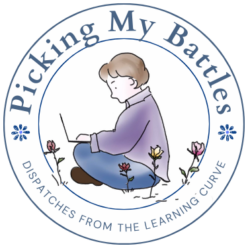
I’m a geek for historical literature.
I don’t always love the language — some 19th century authors seem to go out of their way to use 25 words where 2 might suffice — but I love seeing day-to-day lifestyles through the eyes of people who lived them. I’ll happily wade through six hundred pages of Vanity Fair because it’s a window into what the author actually thought about the early 1800s in 1847. Ditto for Tolstoy and Chekov.
The stories that give me the best time-travel value, though, are the ones written by women. So few history books describe the lives of women (not too many led armies or signed treaties), and, until recently, few women authored history books. Jane Austen and Louisa May Alcott, however, gave us windows into their daily lives. How did they manage a household? What rules of the day did they follow in spirit or to the letter? What did they actually think about the business of marriage?
What did they think?
It’s a question that popped up for me earlier this month as I was gathering readings for Black History Month. A number of retailers were already sending marketing emails with book suggestions, but they were often books by white writers telling the history of African Americans, books that had been ‘redecorated’ for Black History Month, or, the perennial classroom favorite, To Kill a Mockingbird.
I love Harper Lee, and she will have a place in class sometime this year, but the initial idea offerings seemed uninspiring.
The first week was drawing closer, and I stumbled on an anthology of Langston Hughes’s writings. His poem, “Let America be America Again” has been enjoying renewed popularity on the internet in the last few months. I thumbed through the volume, marveling at the breadth of work he had generated in a relatively short life, thinking how he had set a great example of how varied a writing career could be.
And then it hit me (you can say it, that took a while).
I’d been looking for a way for my predominately white students to learn what African Americans thought and think about the American experience. I, obviously, can’t speak about that experience as anything other a sympthetic observer. The kids are also quick to point out that English class is for English not History, but behind the grammar and the literary devices, English class is about learning to understand stories.
It’s about understanding who’s telling the stories and why.
And for me, teaching literature is also about showing the kids where to find the windows into other people’s ideas and lives — and, then, why they should.
To do that this month (and beyond), I decided to lean on the writers and artists of the Harlem Renaissance. It was a great excuse to introduce favorite writers and poets and artists from that era, connecting the kids to them through poets and rappers from this era. And, in the end, deciding to shut up and let the authors and artists who lived and still live Black History do as much of the storytelling as possible may have been the easiest and best way to get the kids to hear it.
